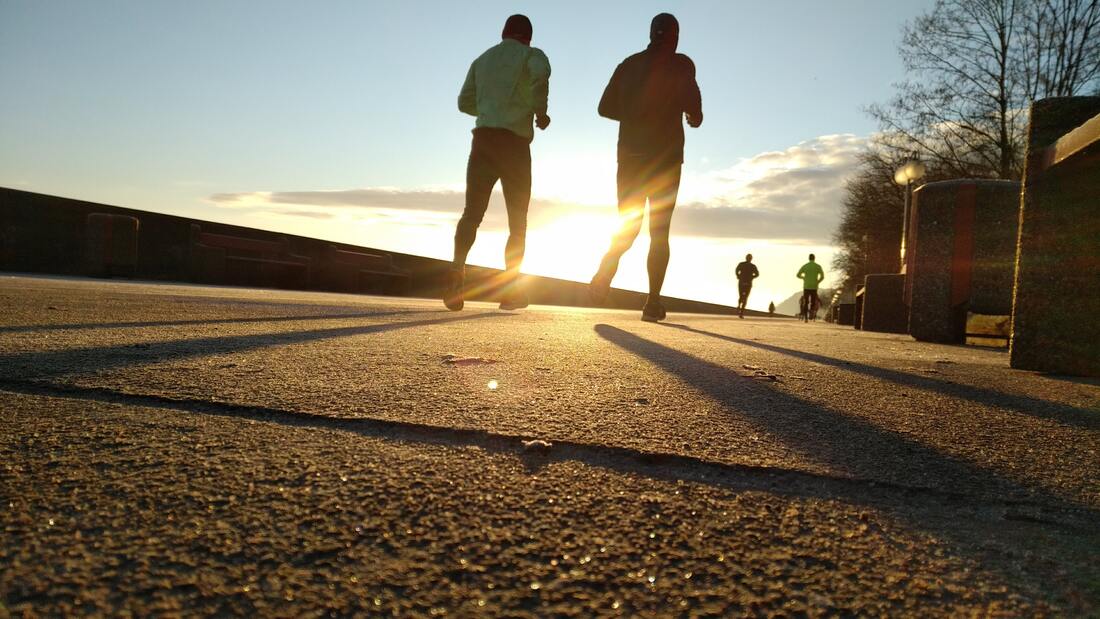|
SEARCH My Blog (Opens in new tab)
There's a fitness benefit, also why you might best skip itRunning with a mask taught me four things that you need to know before you try, two reasons why you might be best not to try, and one fitness benefit. I've been trail running 5km almost every day for over 6 months, so I have a good baseline. Yesterday I ran with a mask. It's not fun. If you have to run with a mask here's what to know. We are in the second wave, and have to wear masksMy hometown of Victoria, Australia, is in the midst of a second wave. We've been in a new lockdown for a week - over 5m people. In 2 days from now, it will become mandatory to wear a mask when outside the home. We'll still be allowed to exercise outside (with no more than one other person). Logically, compared to those just walking outside, runners put others at the most significant risk of infection. Heavy breathing projects microdroplets a long way. That's proven. However, our state government has exempted those exercising from having to wear a mask while they are exercising. The government has traded off the economic costs of people being discouraged from exercising against the economic cost of the virus. I don't question their judgement, because I have no way to know what's best. But just because we don't have to doesn't mean that we should not exercise with a mask - in my case running. Here's how it feltWhen running with a mask, this is what I experienced:
You need to manage these conditions to avoid injury, and I'll list what I did after discussing these challenges, and a fitness benefit of wearing a mask. Less oxygen A mask constrains your access to oxygen, and this is the key reason that it feels uncomfortable. It's harder to breathe fresh air in, and what you breathe in is diluted by what you are breathing out. When we breathe out, we exhale mainly carbon dioxide. I started to feel this dilution of oxygen at about 1.5km (about 1 mile) into the run. After warming-up, I always run the first 1km comfortably while I loosen things up and get into a rhythm. Initially, I had to adjust to the heat of my breath being held in by the mask, and the different noise of my breathing. When I picked up my pace at the 1km point, I started to notice the need to suck in harder to get enough air into my lungs. Nearing the 2km mark, I had settled into a pace which I could manage with an acceptable depth of breathing. Now I was running happily even though from within the mask I sounded like a steam train. Obstructed vision I hadn't thought about this until I started running, but the top of the mask initially obscured my low vision. I found it very distracting when looking down at the trail ahead to see the blur of the top of the mask. This obstruction is a serious risk and distraction. Where I run has tree roots and rocks and new gullies from overnight rain which can twist your ankle in an instant. Last time I stepped on a protruding root I was out for 6 weeks. I had to fiddle with the mask as I ran, squeezing the bracing wire and pulling it lower on my nose. I eventually got a clear line-of-sight for that vital 1m to 2m in front of me. Faster fatigue The lack of oxygen, naturally, causes faster fatigue. This fatigue started to affect me at the half-way point - around 2.5km. I was finding it harder to maintain a good running posture. My adjustment was to slow down a fraction and to increase the energy that I was putting into breathing. I was searching for a sustainable running pace. I hadn't yet found it. Over the next kilometre, I lifted the mask a couple of times to clear the heat and to get fresh air. Generally, I was feeling OK, and I started to visualise the end of the run. Loss of attention and focus The last kilometre is where I had to take the most care. I slowed my pace because I could feel the lack of energy. My attention began drifting so I paid extra attention to the trail, and especially the twisting gentle upwards rise where it narrows towards the end. It was in this final section of my run that I realised that running with a mask requires that you pay constant attention to your condition. Otherwise you could quickly find yourself feeling very weak. My four takeaways - what you need to succeedHere are the four key things I learnt. You need to:
High body awareness I've been exercising consistently for more than 20 years and running consistently for more than 2 years, and running every day for more than 6 months. As a result, I've developed high body awareness. The fact is that if I did not have high body awareness, then I could not have run every day for the last 6 months without injury. It is clear to me after running 5km with a mask that if you do not have high body awareness, then running with a mask could be harmful. The oxygen levels in our blood are finely balanced to enable us to function properly - especially our brain. If you do not have a high sensitivity to what your body is telling you, then you could trip or faint or worse. Maintaining attention and focus Following on from the need for high body awareness is the imperative to adjust continually. You have to match your pace and depth of breathing to ensure that you are remaining attentive and focused. In the last kilometre of my run, I had to slow down more and breathe more deeply to reinforce my ability to focus. At this point, I was running quite a bit more slowly than usual - out to about 6 minutes/kilometre. As you run slower, you feel that urge to get the pace back up. But I realised that would be pushing my luck, and for no gain. Just as like a pilot with hypoxia, you can't safely get home if you are light-headed. Running to avoid injury My experience of running with a mask all comes down to this point - run to remain injury-free. At its most basic, this means to slow down. Of course, that's relative. Running daily, I average about 5:20 per kilometre over 5km. When I ran twice a week, I averaged 4:50. Here are my tips for running safely:
The goal of my daily running is to stay injury-free, and the side-effect is that running keeps me healthy. Breathing rhythmically This point is super important. The mask will disrupt your regular breathing pattern, especially when you start feeling the need to breath deeper. If you do not have an established breathing cadence, then the feeling of breathlessness will result in more irregularity and gasping. You need to control a consistent pattern of breathing rhythmically as this then becomes unconscious and leaves your mind free for remaining alert and attentive. Rhythmic breathing is coordinating your breath with your stride cadence such that you inhale and exhale over an odd number of foot strikes. During a relaxed run, you want to inhale for three steps and exhale for two steps (a 3:2 ratio). Make this a habit for all your running - you will find it makes your runs more comfortable. Potential benefit - a more robust respiratory systemBoxers and other athletes have worn masks for a long time as part of their training regime (known as Elevation Training Masks). The theory is that it equates to a form of altitude training by restricting oxygen availability. On face value, a mask providing "simulated altitude training" makes sense. However, there is controversy about whether the ultimate outcome is better athletic performance. This research (Medicine and Science in Sports and Exercise, 2019) measured the results of athletes using masks in recovery periods between HIIT reps. The group that used masks during recovery experienced three significantly improved outcomes:
Running is more like rest after HIIT than HIIT itself. Therefore I suspect that conscious injury-free endurance running wearing a mask would increase exercise capacity. Not for beginner runnersI will be running with a mask for the next 4 to 6 weeks of our lockdown, so I will be able to compare when we revert to mask-free running. For now, I would recommend that inexperienced runners not run with masks, and of course not anyone with respiratory issues. For experienced runners with high body awareness, you can benefit by maintaining focus and attention, running to avoid injury and breathing rhythmically. And you might gain a boost to your exercise capacity. Good luck. > More posts to help you with EXERCISES > More posts to help you with DIABETES > If you are a @MEDIUM reader my publication Body Age Buster has hundreds of categorised posts which I have written especially for men and women over 50 Follow me on Quora for more health and fitness tips.
If you valued this article >> Follow me Leave a comment >> Share it >> Stay healthy If you have any questions email me and I will get back to you. Latest: get your free customised fitness plan designed uniquely for you.
|
ChoicesSince I was diagnosed at 50 with Type 2 diabetes I've been learning how to do bone-building fitness training which lowers my age. You can too. It's your choice. Walter Categories
All
Archives
May 2023
|

 RSS Feed
RSS Feed



